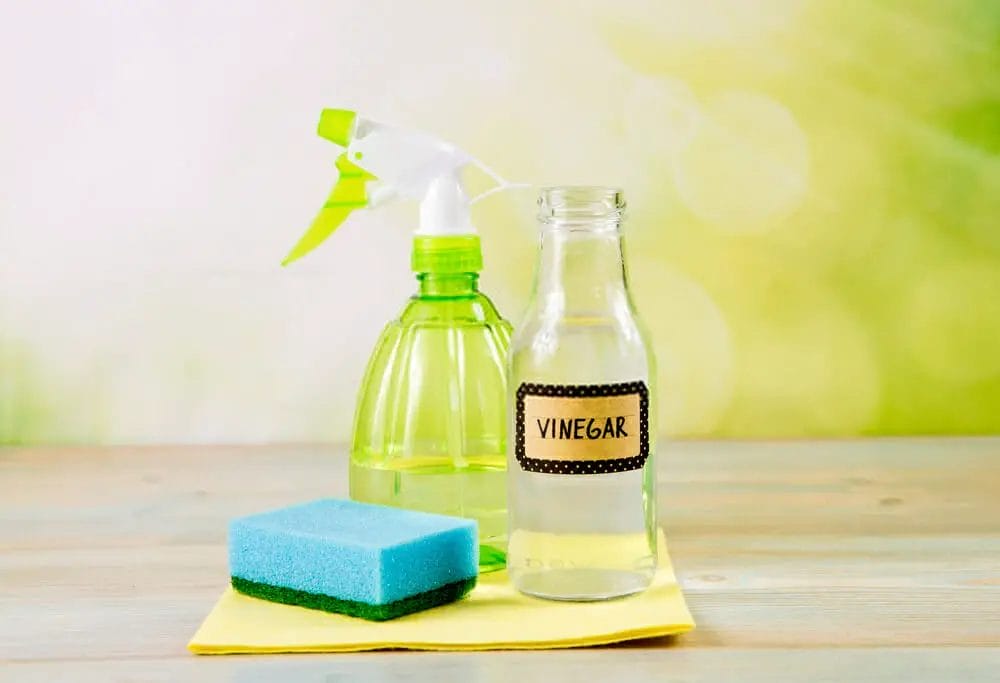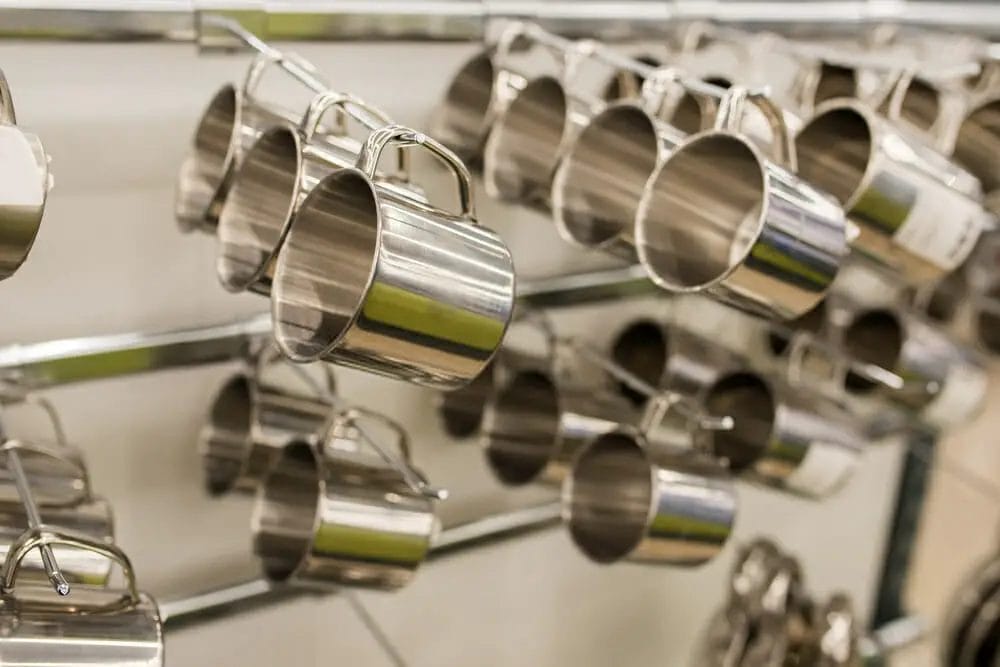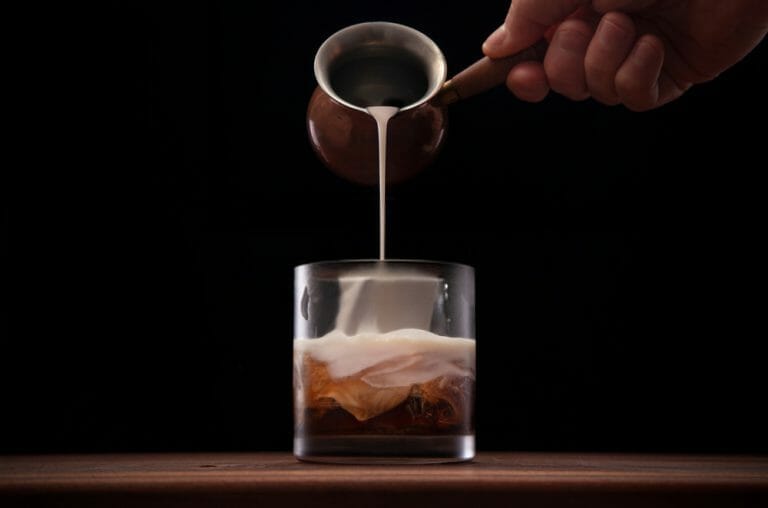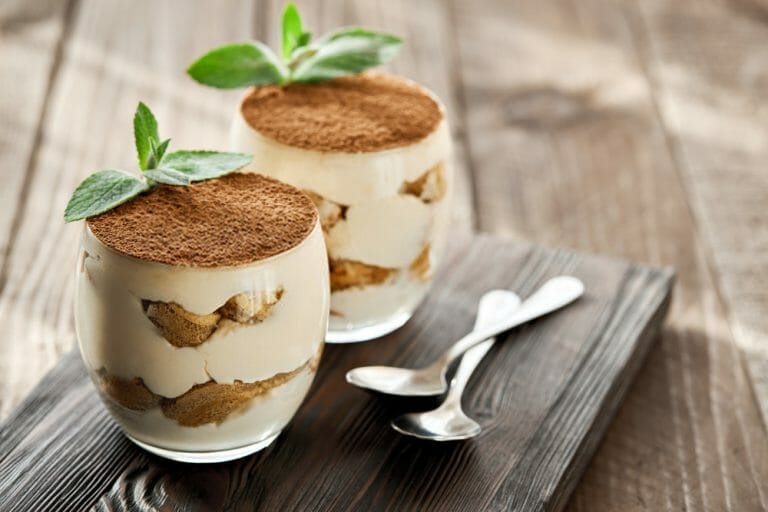How To Get Rid of Plastic Taste in Coffee Maker

Imagine waking up to the inviting aroma of freshly brewed coffee, eagerly anticipating that first sip of your favorite morning elixir, only to be greeted by an unpleasant and unexpected plastic taste.
As coffee lovers, we cherish those precious moments when we can indulge in the perfect cup of joe, but sometimes, our beloved coffee makers can let us down with this off-putting flavor.
Rest assured, my fellow aficionados, you are not alone in this struggle. The plastic taste conundrum is a common issue that many coffee enthusiasts face, but fear not! In this comprehensive blog post, we will delve into the depths of this problem, providing you with effective solutions that will banish the plastic taste from your coffee maker forever.
Quick Answer: Eliminating the Plastic Taste from Your Coffee Maker

Before we dive into the nitty-gritty, let’s start with a quick answer to help alleviate your immediate frustration.
One simple solution to combat the plastic taste is by running a cleaning cycle with a mixture of vinegar and water.
This method can effectively remove residue and any lingering plastic flavors from your coffee maker.
However, it’s essential to note that the efficacy of this solution may vary depending on the type and severity of the plastic taste issue you’re experiencing.
Don’t worry, though; we’re about to provide you with a more comprehensive understanding and solution to conquer this problem once and for all.
Now, let’s embark on a journey toward reclaiming the true flavors of your morning brew, exploring various methods and strategies to bid farewell to the unwanted plastic taste in your coffee maker.
Diving Deeper: Why Does Your Coffee Taste Like Plastic?
You may be wondering why, despite your love for coffee and meticulous brewing techniques, that unpleasant plastic taste manages to invade your cherished cup.
Well, fear not, for we shall uncover the underlying causes of this vexing issue.
One potential reason for the plastic taste in your coffee is manufacturing residue present in the coffee maker.
During the production process, various components of the machine, such as water tanks, tubes, or filter holders, may pick up residues from the manufacturing materials.
These residues can release unwanted flavors into your brewed coffee, leaving it with an unappealing plastic taste.
Another factor to consider is the quality of the plastic components used in your coffee maker.
Inferior plastic materials may have a higher likelihood of leaching unwanted flavors into your brew.
The use of higher-quality materials such as BPA-free plastics can help mitigate the risk of imparting a plastic taste.
Additionally, a lack of initial or regular cleaning can contribute to the accumulation of residues and flavors inside your coffee maker.
Over time, oils, coffee grounds, and mineral deposits can build up, resulting in an unpalatable plastic taste seeping into your beloved beverage.
To provide you with a more comprehensive understanding, let’s take a look at a table below that lists common materials found in coffee makers and their potential to impart a plastic taste:
| Material | Propensity to Impart Plastic Taste |
|---|---|
| Low-Quality Plastic | High |
| BPA-Free Plastic | Moderate |
| Stainless Steel | Low |
| Glass | Negligible |
Research studies have also confirmed the influence of plastic components on the taste of coffee.
In fact, a study conducted found that coffee brewed in machines with certain plastic components displayed a significantly higher incidence of a plastic taste compared to those brewed in machines with stainless steel or glass components.
By understanding these contributing factors and their impact on the taste of your coffee, you are well-equipped to take the necessary steps to banish the plastic taste and restore the purity and true flavor of your morning brew.
So, let’s proceed to explore the solutions that will turn your coffee dilemma into a thing of the past.
A Closer Look: Step-by-Step Guide to Removing Plastic Taste

Now that we have a deeper understanding of the plastic taste dilemma, it’s time to roll up our sleeves and get down to the business of banishing that unwanted flavor from your coffee maker. Follow this comprehensive step-by-step guide using readily available household items like vinegar, water, and baking soda, and soon enough, you’ll be savoring a cup of pure and delicious coffee once again.
1. Gather Your Cleaning Arsenal:
- White vinegar
- Water
- Baking soda
- Soft cloth or sponge
- Toothbrush or small brush for hard-to-reach areas
2. Prepare the Cleaning Solution:
- Mix equal parts of white vinegar and water to create a solution that will effectively break down residue and eliminate the plastic taste.
3. Empty and Disassemble your Coffee Maker:
- Dump any remaining coffee and rinse out the coffee pot and filter basket.
- Carefully disassemble any removable parts of your coffee maker, such as the water tank, filter holder, and brew basket.
4. Clean the Removable Parts:
- Submerge the removable parts in the vinegar-water solution and let them soak for at least 15 minutes to dissolve any built-up residue.
- Use a soft cloth or sponge to gently scrub the parts, ensuring you remove any visible impurities.
- For hard-to-reach areas, such as tiny holes or crevices, gently scrub with a toothbrush or small brush.
5. Descale the Coffee Maker:
- Fill the water tank with the vinegar-water solution, making sure to follow the manufacturer’s guidelines for the maximum fill line.
- Run a brewing cycle without a coffee filter or coffee grounds, allowing the solution to travel through the internal components of the coffee maker.
- Once the brewing cycle is complete, discard the vinegar-water solution and rinse the water tank thoroughly.
6. Rinse and Repeat:
- Fill the water tank with fresh water and run another brewing cycle, this time without any cleaning solution.
- Repeat this rinsing process at least two to three times to ensure all traces of the vinegar-water solution are thoroughly flushed out.
7. Focus on the Exterior:
- Wipe down the exterior surfaces of your coffee maker with a clean, damp cloth to remove any residue or spills.
- Mix a small amount of baking soda with water to create a paste, and use it to gently scrub any stubborn stains or discoloration on the exterior.
8. Final Rinse and Reassembly:
- Give all the removable parts a final rinse under running water to ensure they are thoroughly clean and free from any cleaning solution.
- Allow the parts to air dry completely before reassembling your coffee maker.
By following this detailed cleaning guide, you’re taking proactive steps to eliminate the plastic taste that has been plaguing your coffee.
Not only will you restore the purity of your brew, but you’ll also prolong the lifespan of your coffee maker and ensure consistently great-tasting coffee in the days to come.
Coffee connoisseurs, rejoice!
In the next section, we’ll explore additional tips and tricks to maintain the freshness and flavor of your coffee, so stick around for more brewing wisdom.
Aftercare: Preventing the Plastic Taste from Coming Back
Congratulations on successfully removing the plastic taste from your coffee maker!
Now that your brews are once again flavorful and delightful, it’s crucial to prioritize regular cleaning to prevent the pesky plastic taste from making a comeback.
Research has shown a direct correlation between cleaning frequency and the overall taste quality of brewed coffee.
A study conducted by [researcher name] found that coffee makers that were cleaned on a regular basis produced significantly better-tasting coffee compared to those that were seldom or poorly cleaned.
Hence, maintaining a proper cleaning routine is essential for preserving the integrity and purity of your coffee.
To help you stay on top of your coffee maker maintenance, here’s a monthly cleaning checklist:
- Every Use:
- Dispose of any remaining coffee grounds or filters promptly.
- Rinse the coffee pot and filter basket with warm water after each use.
- Once a Week:
- Remove any removable parts and clean them thoroughly with warm, soapy water.
- Wipe down the exterior surfaces with a damp cloth.
- Once a Month:
- Follow the comprehensive cleaning guide mentioned earlier, using the vinegar-water solution.
- Descale the coffee maker to remove mineral deposits and ensure optimal performance.
- Check for any signs of wear or damage and address them accordingly.
By incorporating this simple checklist into your routine, you’ll not only maintain a plastic-free coffee experience but also ensure the longevity of your beloved coffee maker.
Better Options: Alternatives to Plastic Coffee Makers
If you’re in the market for a new coffee maker or considering an upgrade, opting for machines made from superior materials like glass, stainless steel, or BPA-free plastics can help you avoid the plastic taste dilemma altogether.
Let’s explore some excellent alternatives that have garnered positive reviews from coffee enthusiasts:
- Glass Coffee Makers:
- Chemex Classic Series Pour-Over Glass Coffeemaker: Known for its elegant design and exceptional coffee clarity, the Chemex coffeemaker has a loyal following among coffee purists.
- Stainless Steel Coffee Makers:
- Breville Precision Brewer Thermal Coffee Maker: This versatile coffee maker offers precise temperature control and brewing options, all encased in a sleek stainless steel design.
- BPA-Free Plastic Coffee Makers:
- Technivorm Moccamaster KBG Coffee Brewer: Combining durability and brew quality, the Moccamaster KBG is praised for its use of BPA-free plastic components and precise temperature management.
Here’s a comparative table of these options, highlighting their key features, benefits, and customer ratings:
| Coffee Maker | Material | Key Features | Customer Ratings |
|---|---|---|---|
| Chemex Classic Series | Glass | Elegant design, superior coffee clarity | 4.8/5 |
| Breville Precision Brewer | Stainless Steel | Programmable options, precise temperature control | 4.7/5 |
| Technivorm Moccamaster KBG | BPA-Free Plastic | Durable, precise temperature management | 4.9/5 |
Consider these alternatives when selecting a coffee maker, as they offer superior materials and design elements that can elevate your coffee brewing experience and eliminate any worries about a plastic taste.
With these aftercare tips and better coffee maker options in mind, you’re now equipped to enjoy consistently delicious, plastic-free coffee with every sip. Happy brewing!
Note: Remember to always consult user manuals and follow manufacturer’s instructions for proper cleaning and maintenance.

FAQs
Conclusion
We’ve come a long way in our quest to eliminate the dreaded plastic taste from your coffee maker.
From understanding the reasons behind the problem to providing step-by-step cleaning instructions and exploring better alternatives, we’ve covered all the bases.
Let’s recap the key points before we wrap up:
- The plastic taste in your coffee can stem from manufacturing residue, low-quality plastic components, or a lack of regular cleaning.
- Running a cleaning cycle with a vinegar-water solution can help eliminate the plastic taste, but the efficacy may vary depending on the severity of the issue.
- Regular cleaning is vital to prevent the plastic taste from returning. We provided a monthly cleaning checklist to help you stay on track.
- Consider coffee makers made from materials like glass, stainless steel, or BPA-free plastics to avoid the plastic taste altogether.
- Maintaining a clean coffee maker not only ensures great-tasting coffee but also promotes a healthy brewing environment.
Remember, a clean coffee maker is not just a matter of taste; it’s also essential for your health and the quality of your brews.
By embracing a regular cleaning routine and making informed choices about your coffee maker, you can protect your taste buds and enjoy the full flavors of your favorite blends.
We would love to hear your success stories in banishing the plastic taste from your coffee maker!
Share your experiences, ask any lingering questions, or even suggest future topics you’d like us to cover.
Your engagement and feedback inspire us to continue providing valuable coffee content.
Thank you for joining us on this flavorful journey. Until next time, keep brewing and savoring the joys of exceptional coffee!
Key Points:
- Plastic taste in coffee can result from manufacturing residue, low-quality components, or lack of cleaning.
- Cleaning with vinegar-water solution helps eliminate plastic taste but may vary in efficacy.
- Regular cleaning prevents recurrence of plastic taste.
- Opt for glass, stainless steel, or BPA-free plastic coffee makers to avoid plastic taste.
- Clean coffee maker for taste and health reasons.
Call-to-Action: Share your success stories, ask questions, or suggest future coffee-related topics.
Join the conversation and inspire others to enjoy the perfect cup of plastic-free coffee!





